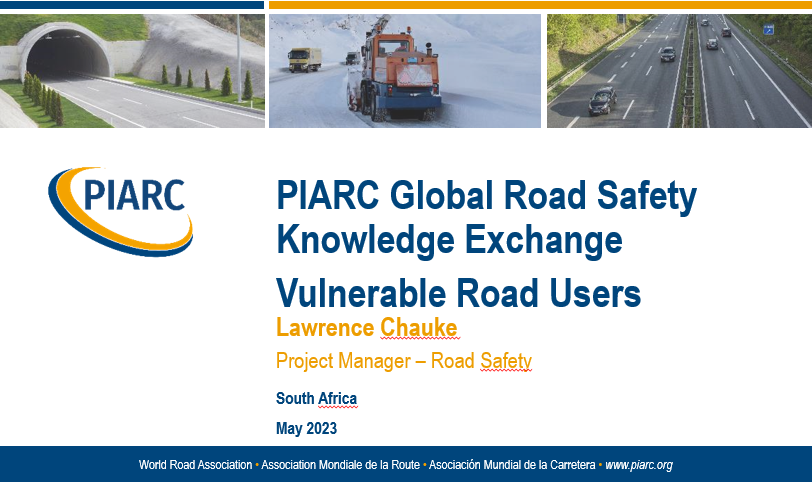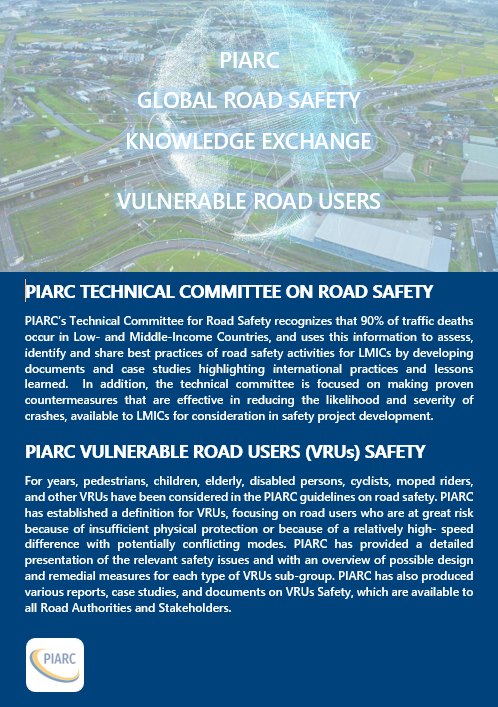PIARC is boosting Road Safety in LMICs: focus on Vulnerable Road Users (VRUs)
Published on 4 July 2023.
PIARC Global Road Safety Knowledge Exchange.
Lawrence Chauke presents Vulnerable Road Users safety issues. Watch now!
Member of PIARC Technical Committee 3.1 “Road Safety”
Hop on our Exchange project aiming at sharing knowledge about road safety, especially with low and middle-income countries with limited ressources but also with more developed economies with different needs and priorities. Thematically, the Road Safety Knowledge project will focus on the Safe System approach, addressing safe roads and roadsides, safe road users, safe vehicles and safe speeds. It is managed for PIARC by the National Technical University of Athens (NTUA) and the Austrian Institute of Technology (AIT).
This month, let’s focus on VRUs!

